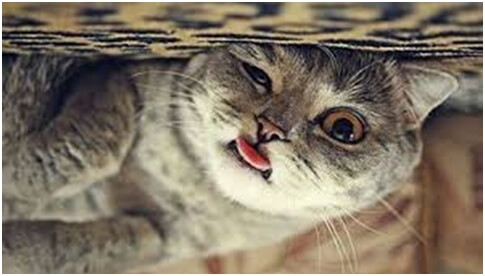Before choosing a new adult cat or kitten, it is important to take time to research and think about your options. A cat’s personality, age, and appearance, as well as the kinds of pets you already have at home, are all things you should keep in mind when choosing a cat. And if you’ve never owned a cat before, it’s also important to know in advance exactly what taking care of your new cat will involve.

What age and type of cat should I get?
In choosing a cat, you must first decide whether you want to bring home a kitten, a juvenile, or an adult. Generally, kittens are curious, playful, and energetic. You get to watch them grow and mature, and can influence the development of their personality. A kitten may also be more readily accepted by pets that you already have. An adult cat’s personality is already established, so you’ll have a better idea of what kind of pet it will be in your home situation. Adult cats also usually require less intensive care and supervision than kittens or juveniles do.
A second thing to consider in choosing a cat is whether you want a pedigreed or a mixed-breed animal. Mixed-breed cats are generally categorized as either domestic shorthairs or domestic longhairs. Mixed-breed and pedigreed cats both can be excellent companions. The greatest advantage of getting a pedigreed kitten or adult is that its size, appearance, and to some extent, personality, are likely to fit the profile of its particular breed. With a mixed-breed kitten, you will be unable to predict its adult size and appearance as accurately.
Many of these considerations come down to personal preference. Truly, the most important factor in choosing a cat is to determine how healthy it is.
How can I tell if a cat is healthy and friendly?
There are several visible indicators of good health and temperament. Healthy cats should have clear, bright eyes with little or no tearing, and the nostrils should be clean. Runny eyes, sneezing, or a nasal discharge can indicate a respiratory infection. The inside of the cat’s ears should be clean and free of any discharge. A black, tar-like discharge in the ear canal usually indicates an ear-mite infestation; a pus-like discharge may be visible in the ear canal if there is a bacterial or yeast infection. The mouth and gums should be pink, with no evidence of ulcers or sores. The cat’s coat should be glossy, and there should be no bare spots, dry skin, dandruff, or any evidence of external parasites. The cat should not be too thin or have a protruding belly, because either condition can indicate the presence of internal parasites or some other medical disorder. If possible, make sure the cat’s feces appear to be normal and well formed.
The cat should be friendly and comfortable with people. A physically sound kitten is active, bright, responsive, rambunctious, and eager to join in play. Beware of a cat that frequently runs away and hides, or that appears lethargic and sleeps more than seems normal.
What about litter boxes and food dishes?
Before bringing your new cat home, make sure that you already have the basic provisions it will need. First, your cat must have access to a litter box. Cats are naturally fastidious, and most will instinctively use a litter box. The litter box can be simple or extravagant, but most cats prefer simple boxes without hoods. Keep in mind that kittens will need a box that’s low enough for them to enter easily. Unscented, fine-textured litter is preferred by the majority of cats. At first, you will choose the type of litter and litter box; later, your cat may demonstrate its preferences.
Be sure to keep the litter box and surrounding area clean, and change the litter frequently. Cats may avoid a litter-box area that isn’t clean. Also, providing just one litter box may not be sufficient. Animal behaviorists suggest providing as many boxes as you have cats, plus one. For example, if you have two cats, you should have three litter boxes.
Your new cat also will need separate food and water dishes, kept far away from the litter-box area, to avoid contamination. It is important to keep the dishes clean, and the contents fresh. Cats may reject old food or stale water.



